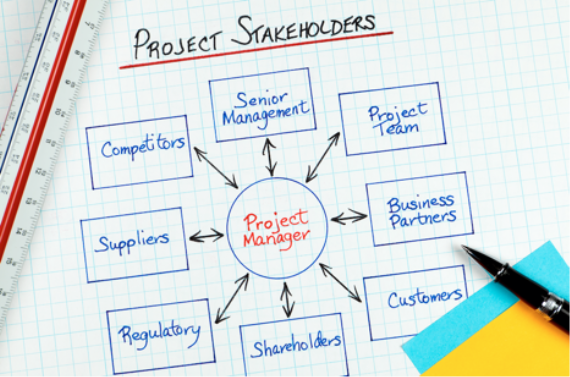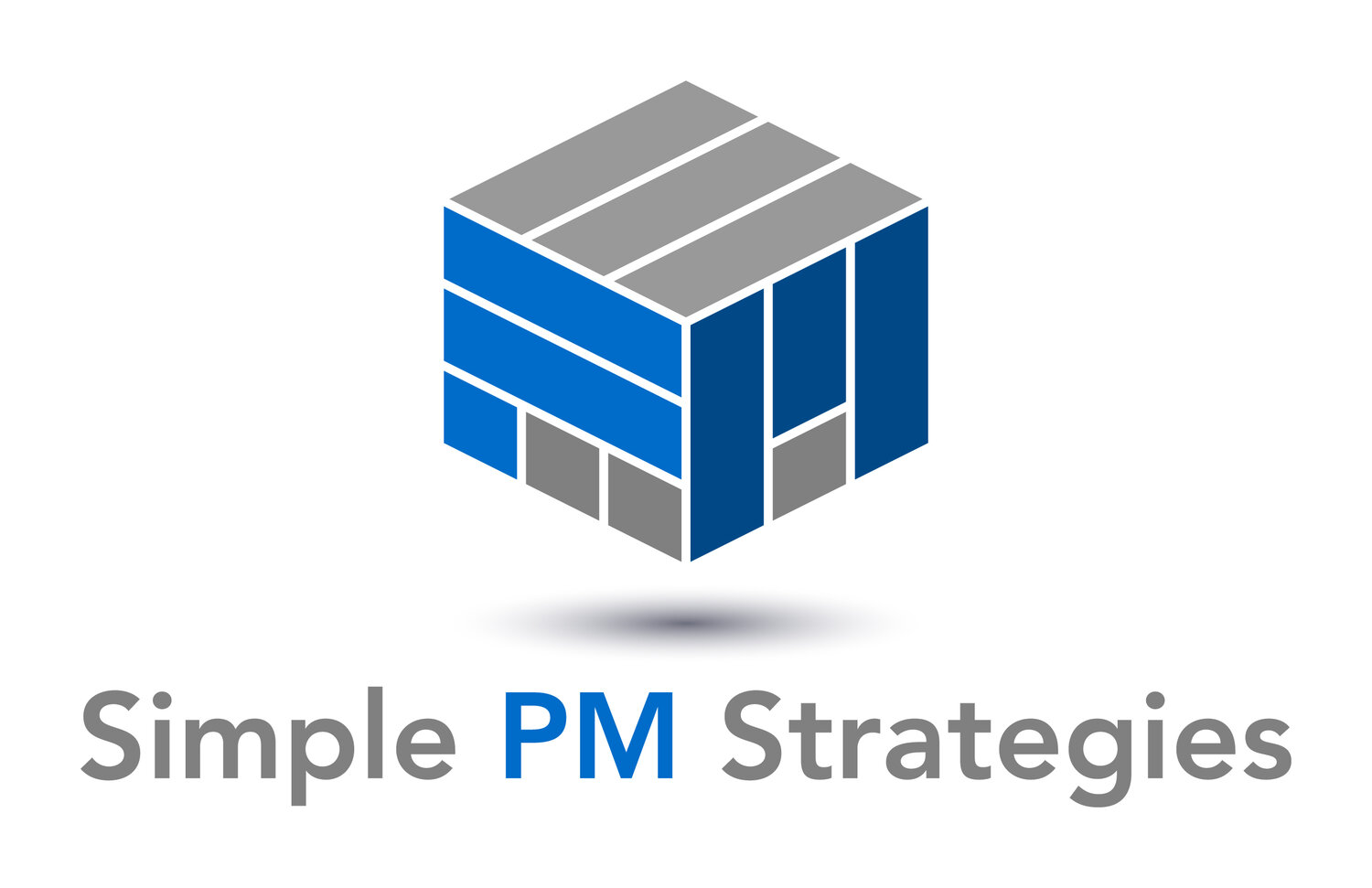5 Pivotal Steps to Boost Stakeholder Engagement for Your Project
The purpose of this article is to cover specific ways to boost stakeholder engagement, so they are interested, committed, involved, and support your project to make it successful.
Stakeholders and Communications are under the LEAD domain and under People in the MPM model, although engaging Stakeholders early on is a major activity in the INITIATE and RATIONALIZE step.

Stakeholders and Communications are under the LEAD domain and People segment
Boost Stakeholder Engagement
When you begin a project, it’s important to identify your stakeholders and keep them top of mind.
A stakeholder is anyone who has a vested interest in how your project turns out because it directly or indirectly affects them.

Identify and Engage with Stakeholders early on in the project
Your project will probably have more stakeholders than you expect. Any staff impacted by the change your project will bring includes organization, the management you report to, and maybe their peers and business areas.
During the project you’ll be needing time from some of your stakeholders, and to different degrees, depending on their expertise and authority over the project.
You’ll also need stakeholder support, especially if they are communicating with others about your project and you are not around. What they say, how they say it, and how much they support your project for its success, is a measure of how much you have engaged them.

You need stakeholder support for the success of your project
Following are five pivotal steps to boost your stakeholder engagement.
1. Help Your Stakeholders Report on Your Progress
As an example, your boss will be reporting on the project: its progress or any hurdles you experience, but also what the project is about - its aims and outcomes, needs and budget. As a result, it’s very important for you to keep your management in the loop - you'll need dedicated time from them on a regular basis.
Before starting the project, you might have talked things over with your stakeholders informally - told them how you wanted to consult with them, or perhaps you needed their help with something, or maybe you covered how you’ll engage with them as part of your adoption approach.
Once you start your project, though, you’ll need to have formal documents for those commitments so that you can finalize the expectations of everyone involved and catalog them.
2. Define Your Stakeholder’s Needs
For our vehicle purchase project we’ve been covering in a few of our articles, buying a new vehicle is a lot like a project, just on a personal level. It is not something you do on a regular basis, and it involves help from friends or trusted advisors, a time frame to get it accomplished, and of course, a budget.
Your friends and trusted advisors are your stakeholders. They have a stake in the success of your vehicle purchase. But you need to clarify things for your stakeholders by definitively outlining how they are involved and engaged in your project.
Are they just providing an input on a particular decision or are they the ones actually making the decision? Do you want them to help you with your research? What about haggling with the salesperson?
3. Define How They are Engaged
Anyone engaged in your vehicle project may be involved to a distinct level, according to responsibility:
- Informed of your decisions, but not necessarily actively involved: “Hey, just to let you know, I know we talked about my getting a truck, but I think the gas costs will be better if I go with a sedan.”
- Accountable for the actual decision, because they are the single individual making it: “I don’t know enough about vehicles, so when I decide on my final three choices, I am going to ask you to choose one for me.”
- Responsible to help make the decision as part of a team: “I’d like you to help me decide which dealerships to go to, since you have experience with buying vehicles from dealerships.”
- Consulted about what you are doing or what decisions you are making (“Hi, am going to be getting a new vehicle and when I have decided on my final choices, I am going to send them to you. I’d like to hear your thoughts, please”).
There’s a special chart used in project documents which delineates each stakeholder’s degree of involvement. It’s called a RACI (pronounced “ray-see”) chart after the first letters of each type of involvement: Responsible, Accountable, Consulted, and Informed.

RACI: A chart showing stakeholder engagement
4. Tailor Their Communications
A RACI chart can be helpful for a few reasons. It helps you to be mindful of where you should be touching base with people and bringing them to the table. It also provides official documentation, so that if there is a misunderstanding, you have a record of everyone’s commitments.
Finally, it helps you tailor your communications strategy based on the information each type of stakeholder should receive. For example, if they are Accountable, then it may be best to have them on the distribution list for your weekly status report whereas if they are only to be informed then only include them on more general communications.
We discuss how to approach communications depending on your degree of stakeholder engagement in a future blog.
5. Keep Stakeholders Updated
When your stakeholder is actively engaged on your project, and their expectations are clear, keep them up to date on any next steps or actions. It’s important to do this even for the steps that don't involve them directly, especially if it eventually affects them, and more importantly, if you need to adjust their expectations.
If you engage with them frequently to clarify your ideas and expectations, this supports them so that during those times when they speak to others about your project and you’re not there, you can be confident that they are sharing the same vision and supporting your cause. It also helps maintain goodwill, because you are demonstrating that you are respectful of their time and advice.
You want to make sure that they have your back and support you – the best way to do this is by keeping them informed and managing expectations from the start.
Summary
Boost stakeholder engagement, so they are interested, committed, involved, and they support your project to make it successful.
Engage Stakeholders by helping them report on your progress, defining their needs, defining how they are engaged, tailoring their communications, and keeping them updated.
You need stakeholder support, especially if they are communicating with others about your project and you are not around.
What they say, how they say it, and how much they support your project for its success, is a measure of how much you have engaged them.
Action Steps / Apply This Knowledge
- List all of your stakeholders and beside each write a brief sentence about how they are engaged. Add the type of engagement in terms of whether they are responsible, accountable, consulted, or only informed. They can have more than type of engagement.
- Add a bullet or two below each stakeholder to describe their expectations of the project, and your expectations of them. Look for misalignments.
- Add another bullet to describe when and what to communicate. If they are Accountable, then include in the weekly status communication. If only Informed, then include in a monthly broader communication or an informal email.
Another blog article discusses how to communicate with your stakeholders depending on their type of engagement.
- Prompt engineering guidance for AI GPTs such as chatGPT: I’m a business leader managing a project which is delivering X solution, to Y kind of company. What are some suggestions for how to engage stakeholders?”
Learn More to Do More
Check out the learning hub which presents other project concepts from a project knowledge awareness standpoint: https://simplepmstrategies.com/learning-hub-index
INITIATE – Stakeholder Engagement
© Simple PM Strategies 2024
